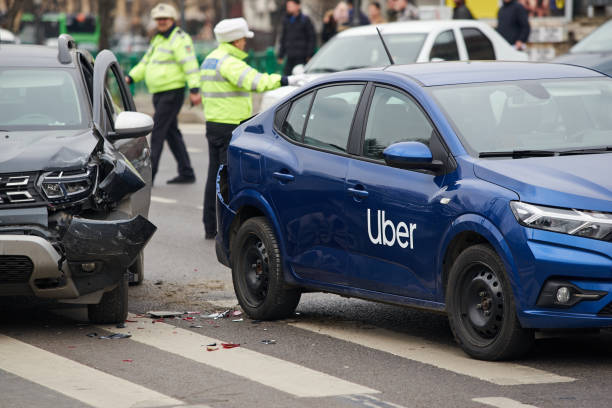Willington Rideshare Accident Lawyer
On Willington’s winter mornings, Route 74 becomes a study in thin margins: black ice in shaded hollows, fluorescent leaves compacted into slick lanes, and rideshare drivers juggling GPS cues with county plowing schedules. At the edge of town, app-based pickups near Willington Town Green often compress staging areas, which can magnify merge conflicts and delayed pickups when plows narrow shoulders. The result: longer on-scene times and hurried exits that increase collision risk.
Rideshare crashes here often start as low-speed shunts but can produce sprains, fractured wrists, and concussions that are deceptively delayed when ambulances face slick back roads. Windham Hospital, the closest emergency receiving center for many Willington residents, reports winter surges that trigger interfacility transfers to larger trauma centers; those transfers add hours and complicate immediate rehab planning. I’ve chronicled cases where delayed transport changed recovery trajectories without dramatic headline scenes.
Along the fringe, the Air Line State Park Trail parking pullouts are popular late-afternoon pickup points; leaf fall and shaded trail approaches turn those lots into slip zones that affect both passengers and drivers. Rideshare manifests, dashcam footage and app timestamps help reconstruct staggered injury patterns – from soft-tissue shoulder injuries to ankle fractures sustained when a passenger exits onto ice. Rehabilitation often moves patients between local outpatient PT and regional specialists based on timing of initial care.
Walking Willington’s lanes during a gray December dispatch, I’ve seen rideshare drivers reroute while coordinating pickups, and recorded how minutes lost to cautious driving translate into queue buildups and delayed care. Documents matter: app logs, hospital arrival times, and transfer records trace the sequence without speculation. I report these patterns so locals understand how winter conditions intersect with rideshare logistics and post-crash rehab timelines, not to promise outcomes but to clarify what unfolds.
Do you need a Willington rideshare accident lawyer? If you or a loved one has been involved in an accident with an Uber, Lyft, or rideshare driver—whether as a passenger, another driver, or even a pedestrian—you have rights. Understanding these rights and navigating the complexities of rideshare accident claims requires the help of an experienced attorney. At Etemi Law, we are dedicated to helping victims of rideshare accidents receive the compensation they deserve.
Call us today at (203) 409-8424 for a


The Reality of Rideshare Accidents
Uber and Lyft have revolutionized transportation, providing millions of rides daily across the U.S. However, with the rise of these services, the number of rideshare-related accidents has also increased. Research from Rice University and the University of Chicago suggests that ridesharing services have contributed to a 2-3% increase in U.S. traffic fatalities since 2011, leading to up to 1,100 deaths annually.
Common Causes of Rideshare Accidents
Uber and Lyft drivers often operate under challenging conditions, increasing their risk of accidents. Some of the most common causes include:
- Distracted Driving – Relying on GPS, accepting ride requests, and managing passengers can divert a driver’s attention.
- Driver Fatigue – Many rideshare drivers work long hours or multiple jobs, leading to drowsy driving.
- Unfamiliar Routes – Navigating new areas can cause sudden stops or erratic driving behavior.
- Poor Vehicle Maintenance – Rideshare drivers are responsible for keeping their vehicles in good working condition, but lapses can lead to preventable accidents.
Connecticut Rideshare Laws and Regulations
Connecticut has strict laws governing rideshare companies and their drivers. These include:
- Mandatory Background Checks – Uber and Lyft must conduct background checks on all drivers, including a criminal record and driving history review.
- Vehicle Safety Requirements – Vehicles must pass inspections and meet specific safety criteria.
- Insurance Coverage – Rideshare companies must provide at least $1 million in liability coverage when drivers are transporting passengers.
- Driver Hour Limits – Uber and Lyft drivers can work a maximum of 14 consecutive hours and 16 hours in a 24-hour period to prevent fatigue-related accidents.
Who is Liable in a Rideshare Accident?
Determining liability in an Uber or Lyft accident can be complex, as multiple insurance policies may be involved. Our legal team at Etemi Law will investigate your case to establish liability and maximize your compensation.
If Another Driver is At Fault
- The at-fault driver’s insurance is the first line of compensation.
- If the at-fault driver is uninsured or underinsured, Uber/Lyft’s uninsured motorist coverage may apply.
If the Rideshare Driver is At Fault
- If the driver was logged into the app and waiting for a ride request, Uber/Lyft provides $50,000 per person/$100,000 per accident in bodily injury coverage.
- If the driver was transporting a passenger, Uber/Lyft provides $1 million in liability coverage.
- If the driver was off duty, their personal auto insurance applies.
Why You Need a Willington Uber and Lyft Accident Lawyer
Rideshare accident cases involve multiple insurance companies and complicated liability issues. Insurance companies often try to minimize payouts, but with an experienced attorney from Etemi Law, you can fight for the full compensation you deserve.
Our legal team will: ✅ Investigate the accident thoroughly ✅ Obtain key evidence, including rideshare records and driver logs ✅ Negotiate aggressively with insurance companies ✅ Take your case to court if necessary
Contact Etemi Law Today
If you or a loved one has been injured in an Uber or Lyft accident, don’t wait. Protect your rights and get the compensation you deserve. Contact Etemi Law today for a free consultation.
📞 Call us at (203) 409-8424 💻 Visit us online to schedule your case review


